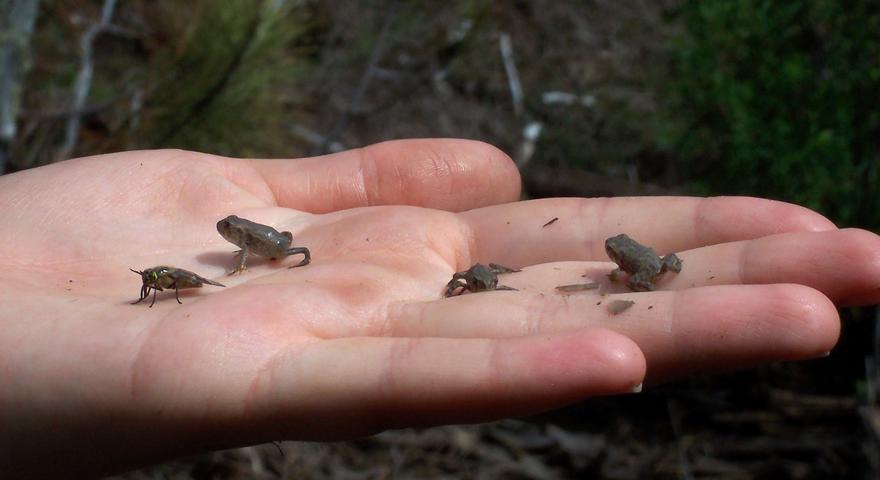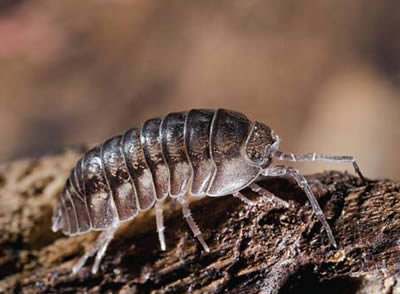Nutrition
Like all other animals, the American Toad is a heterotroph. Heterotrophs cannot produce their own food, so they must obtain it from an outside source. While tadpoles are most herbivorous, mature toads are carnivorous. Carnivores derive their energy and nutrients from mainly animal tissue. The toads feed mostly on insects and small invertebrates, as seen below (picture by Karen Francl). For example, they eat earthworms, sow bugs, spiders, centipedes, millipedes, moths and caterpillars.
Unlike other toads, they do not have
to expend as much energy foraging. They can simply extend
their extremely sticky and long tongue to quickly capture their
prey, whether it’s in the air or on the ground. Bufo americanus
is known for limiting levels of pesky creatures in gardens, like
slugs, beetles, and fruit flies. A study showed that one
toad can eat up to 1,000 insects a day. Although the toad
loves to eat, it prefers to eat at night. This is mainly
because the temperatures get too hot during the day, so it will
typically aestivate to keep from desiccating. Aestivation
is a period of dormancy; similar to hibernation, but less
extreme. American toads
hibernate during the winter, also. They cannot tolerate low
temperatures so they burrow by digging backwards into the ground
just below the frost line. Hibernation begins when the
temperature hits about 50 degrees Fahrenheit, or 9 degrees
Celcius. They then wake up just in
time for mating season. To learn more about another creature
that hibernates, visit this website about the
Ground Squirrel.
Predators of the toad include raccoons, skunks, garter
snakes, water snakes, hawks and herons. To learn more
about the hawk, one of the toads predators, visit this website
on the Red-tailed Hawk. Although the
toxins would usually affect the organism, these predators have
built up an immunity to the toxin.
Toads in general have a pulmonary and a systemic
system. Their hearts have 3 chambers: 2 ventricles and 1
atrium. Like other vertebrates, they have a 2 lobed lung
that is highly vascularized. The toad uses a unique system to
pump air into its lungs. Negative pressure brings air into
the mouth, then the toad closes both the nostrils and mouth to
create a positive pressure, which forces air into the lungs.
The toad is more complex than you think!
To learn more about the American Toad, visit http://warnell.forestry.uga.edu!


